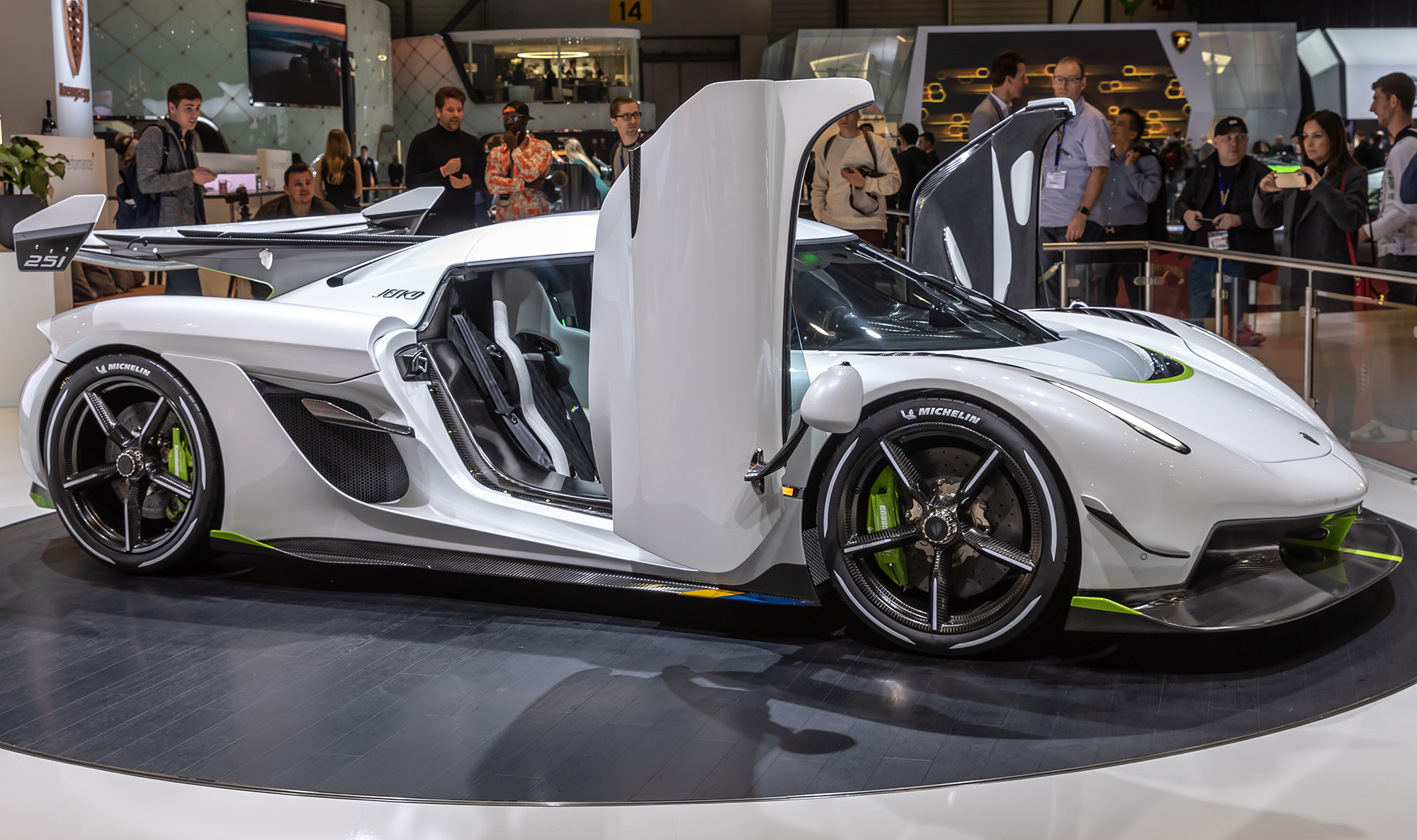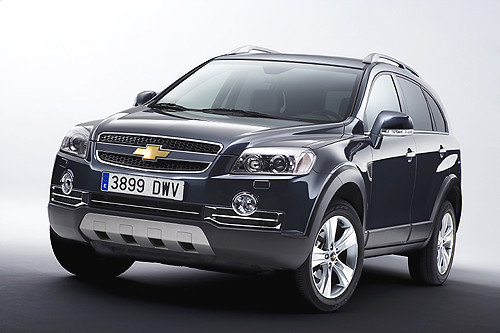
Alright, gearheads and casual observers, let’s be honest with ourselves. In the long and storied history of automobile design, certain cars stand out not for their beauty or innovation, but for their ability to make onlookers question everything they know about automotive aesthetics. We’re talking about those machines that elicit a head tilt, a furrowed brow, and maybe a muttered, “What were they thinking?” Because while beauty may be in the eye of the beholder, these automotive oddities manage to achieve near-universal agreement on their visual misfortune. They’re the vehicular equivalent of a bad haircut that somehow made it to a magazine cover.
Yeah, we’re talking about some of the worst automotive abominations in history. Real stinkers that looked terrible, performed terribly, and made us so, so curious what researchers and “experts” were saying in those boardrooms to get millions invested in them. It’s truly baffling, isn’t it? If I put a swear word here, there’d be at least two editors who would catch it before this article was published, yet these cars were discussed in boardrooms (somehow positively), little models were made of them, then life-size prototypes, designers and engineers worked on them, they were tested, and then they were allowed to be rolled off the assembly line with advertisements and all. Huh!?
These flops taught the auto industry lessons the hard way, often costing more than just sales figures. They pushed limits, but not always in the right direction. Every car we’re about to dissect crossed a clear line between boldness and bad judgment. This isn’t just a list of unpopular cars; it is a masterclass in how spectacularly things can go wrong when design, engineering, and purpose lose their connection. So buckle up, because we’re about to prepare for some serious automotive schadenfreude as we examine seven of the most spectacularly awful vehicles ever conceived.
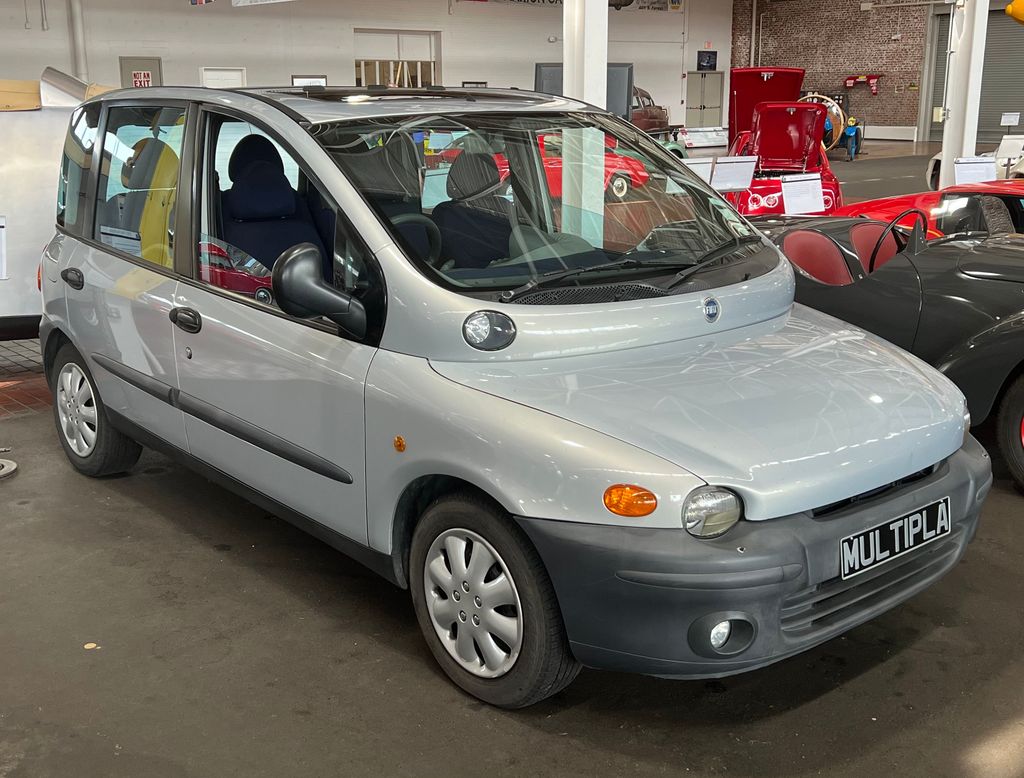
1. **1998 Fiat Multipla**Behold the Fiat Multipla, a vehicle that appears to have been designed during a fever dream after consuming expired Italian cheese. Seriously, how else do you explain a car that looks like it’s wearing another, smaller car as a hat? The visual chaos begins with its bizarre double-stacked front end, creating a truly unsettling profile. It’s less a car and more an architectural accident, leaving you wondering if Fiat’s designers were challenging conventional aesthetics or simply challenging everyone’s gag reflex.
This isn’t just a quirky design; it’s a profound statement in automotive anti-beauty. The bulbous windshield, coupled with those bug-eyed headlight arrangements, gives it the distinct appearance of a mutant frog that somehow escaped from a nuclear power plant. It’s a look that dares you to avert your gaze, but its sheer audacity makes it impossible to ignore. Every angle seems to contradict the one before it, resulting in a cohesive lack of cohesion that is truly unique.
It’s as if Fiat’s designers were given a singular, unholy directive: to create something that would make small children cry on sight. And by every measurable standard, they succeeded beyond their wildest expectations. The Multipla isn’t just a car you don’t want to be seen in; it’s a car that makes you question the very concept of vision itself. It stands as a monument to design decisions that defy logic, taste, and perhaps even the laws of physics.
Read more about: Critical Stellantis Recall: Comprehensive Breakdown of 72,000 UK Vehicles Facing Engine Fire Risk
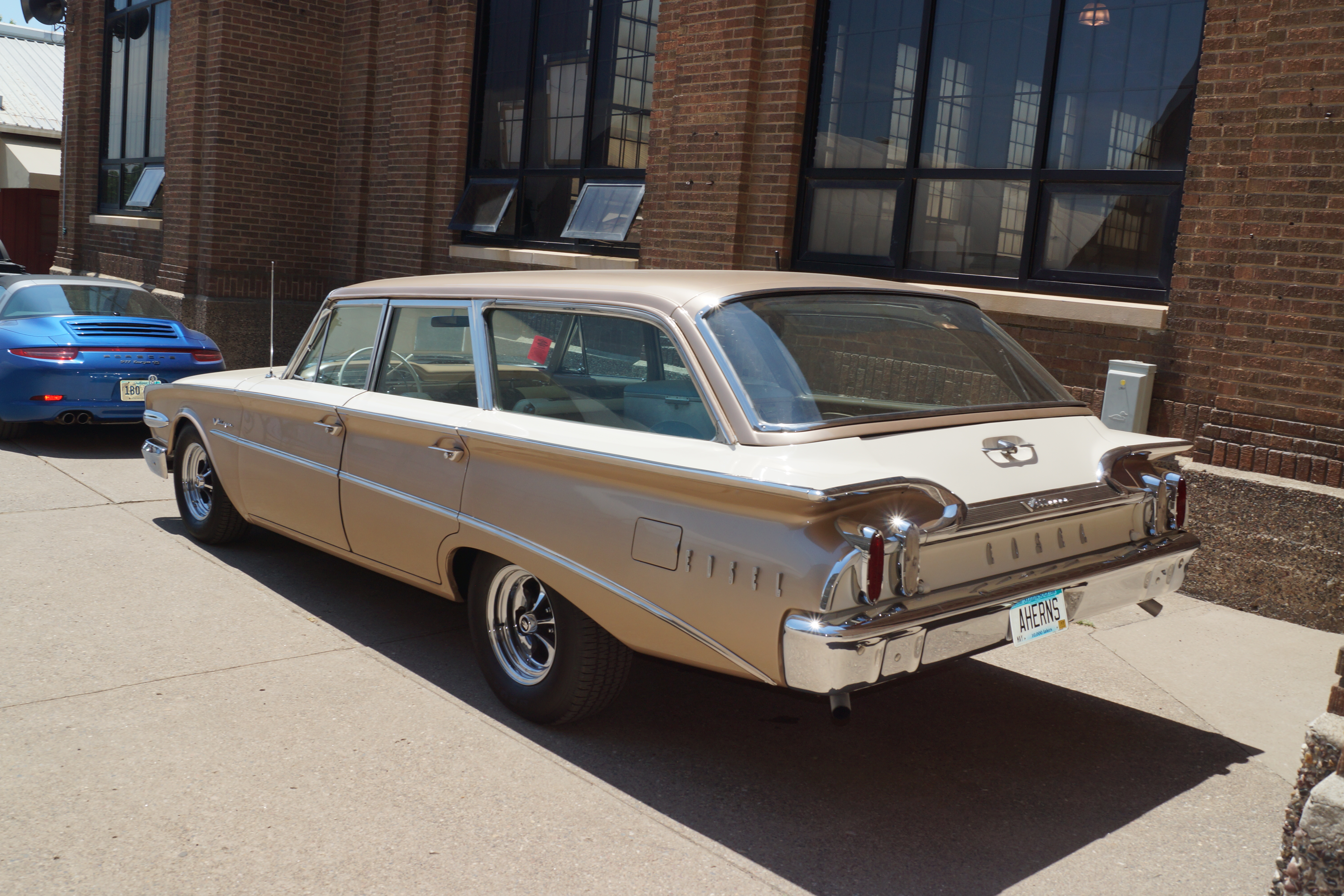
2. **1960 Edsel Villager**The 1960 Edsel Villager wagon represents Detroit’s last desperate gasp to salvage the Edsel disaster, and somehow, almost miraculously, they made it even worse. If the original Edsel was Ford’s ambitious folly, the Villager was its final, wheezing breath, proving that even a failure can descend into a deeper, more profound state of awfulness. It was a testament to the idea that sometimes, it’s better to just cut your losses.
While Ford’s designers mercifully toned down the infamous “horse collar” grille that plagued earlier models, they seemed to compensate for this minor victory by turning the rear end into a chrome-drenched modern art installation gone spectacularly wrong. Those rocket-inspired taillights, in particular, look like they were stolen directly from a carnival ride that had seen better days, and the side trim appears to be actively trying to escape the vehicle entirely, perhaps in a desperate bid for freedom from its own visual misfortune.
Even with a more subdued front, this final-year wagon still manages to embody everything that made Americans collectively say “thanks, but no thanks” to Ford’s grand, misguided experiment. It’s like watching the last episode of a TV show that got canceled for a very, very good reason – a painful, drawn-out conclusion to a story nobody wanted to follow anymore. The Villager didn’t just fail; it failed with a flourish of chrome and questionable taste.
Read more about: 13 Automotive Aberrations So Unforgettable, They Should’ve Been Forgotten

3. **1969 Ferrari 365 GTB/4 Daytona Shooting Brake**Feast your eyes upon the automotive equivalent of giving Michelangelo’s David a mullet. Seriously, who looked at one of Ferrari’s most elegant designs – the utterly sublime 365 GTB/4 Daytona – and thought, “You know what this needs? A massive, ungainly greenhouse extension”? Someone, somewhere, decided what this automotive masterpiece *really* needed was a dose of utilitarianism, an idea as blasphemous as it sounds.
This peculiar creation looks like it was designed during a heated argument between an Italian sports car savant and a particularly stubborn British station wagon enthusiast, with neither side willing to back down. The result is a rear glass installation that has all the subtlety of a crystal palace bolted onto a missile, utterly shattering the Daytona’s sleek lines and proving, unequivocally, that even Italian design mastery has its limits when confronted with a truly bad idea.
One can only imagine Enzo Ferrari’s reaction upon seeing this elongated, roof-laden travesty. It was probably the closest the automotive world has ever come to witnessing an Italian giving up on hand gestures entirely, resorting instead to a quiet, profound despair. To transform such a symbol of automotive purity into something so visually jarring is not just a design choice; it’s an act of automotive sacrilege that still stings decades later.
Car Model Information: 2025 Audi Q7 55 Premium Plus
Name: Ferrari 365 GTB/4,and GTS/4 “Daytona”
Caption: 1973 Ferrari 365 GTB/4
Manufacturer: Ferrari
Production: GTB/4: 1968–1973 (1,284 produced),GTS/4: 1971–1973 (122 produced)
Assembly: Maranello
Designer: Leonardo Fioravanti (engineer)
Class: Grand tourer
BodyStyle: berlinetta,Roadster (automobile)
Layout: Front-engine, rear-wheel-drive layout
Engine: Ferrari Colombo engine,V12 engine
Transmission: Manual transmission
Wheelbase: 2400 mm
Abbr: on (GTB/4, dry)
Length: 4425 mm
Width: 1760 mm
Height: 1245 mm
Weight: 1200 kg
Predecessor: Ferrari 275#275 GTB/4,Ferrari 365#365 GTC/GTS
Successor: Ferrari Berlinetta Boxer,Ferrari 550 Maranello
Sp: uk
Categories: 1970s cars, All articles with unsourced statements, Articles with hAudio microformats, Articles with short description, Articles with unsourced statements from April 2021
Summary: The Ferrari Daytona is a two-seat grand tourer produced by Ferrari from 1968 to 1973. It was introduced at the Paris Auto Salon in 1968 to replace the 275 GTB/4, and featured the 275’s Colombo V12 with a larger cylinder bore for 4,390 cc (4.4 L; 267.9 cu in). It was offered in berlinetta and spyder forms. The car came in two variants: the 365 GTB/4 coupe, and the 365 GTS/4 convertible.
The Daytona was succeeded by the mid-engined 365 GT4 Berlinetta Boxer in 1973.
Get more information about: Ferrari Daytona
Buying a high-performing used car >>>
Brand: Ferrari Model: 365 GTB/4 Daytona
Price: $55,675 Mileage: 20,490 mi.
Read more about: 13 Automotive Aberrations So Unforgettable, They Should’ve Been Forgotten

4. **1989 Citroën BX**The Citroën BX is what happens when you let a ruler-obsessed geometry teacher, perhaps suffering from an existential crisis, loose in a design studio. Its entire aesthetic is a collection of harsh angles and flat surfaces, making it appear as though someone attempted to origami-fold a car out of a sheet of metal, but then, overcome by frustration, gave up halfway through. The result is less a flowing design and more a series of abrupt, unforgiving planes.
And if the exterior wasn’t enough to make you question reality, the interior follows the same rigorous, yet baffling, design philosophy. The dashboard, for instance, appears to have been inspired by a broken calculator – a chaotic array of buttons and digital readouts that prioritized novelty over any semblance of user-friendability or visual harmony. It’s a cockpit that actively discourages engagement, feeling more like a challenge than an invitation.
Even by Citroën’s famously eccentric standards – and this is a company renowned for its weird, boundary-pushing designs – the BX manages to look like it’s trying far too hard to be different, yet achieving all the visual charm of a municipal mail sorting facility. It’s a car that screams “unique” but whispers “unfortunate,” failing to deliver on the inherent charm often found in Citroën’s more successful oddities. It’s proof that sometimes, trying too hard just makes things worse.
Read more about: Don’t Get Stuck: These 10 Models Will Rack Up Thousands in Repairs After the 100,000-Mile Mark

5. **1947 Crosley CC**Behold the 1947 Crosley CC, a car that emphatically proves good things don’t always come in small packages. This miniature monstrosity truly looks like a nervous child’s first, tentative attempt at drawing a car – all shaky lines and wildly disproportionate elements. Somehow, it manages to appear both too tall and too narrow at the exact same time, defying the basic principles of automotive balance and aesthetics. It’s a marvel of visual awkwardness.
In post-war America, an era when bigger was decidedly, overwhelmingly better, the Crosley CC had all the commanding presence of a mail-order toy that arrived slightly dented and perhaps missing a wheel. It struggled to assert itself on roads filled with much larger, more imposing vehicles, often looking like it was perpetually on the verge of being swallowed whole by the automotive landscape. This wasn’t just a small car; it was a nearly invisible one.
It’s as if someone described the abstract concept of “car” to a designer who had only ever seen vehicles through a keyhole, and then, for good measure, told them to make it even smaller, just to add to the challenge. The result is less an “economy car” offering practical, affordable transport, and more a stark testament to the “economy of style.” It’s a reminder that sometimes, less is just, well, less.
Read more about: 13 Automotive Aberrations So Unforgettable, They Should’ve Been Forgotten
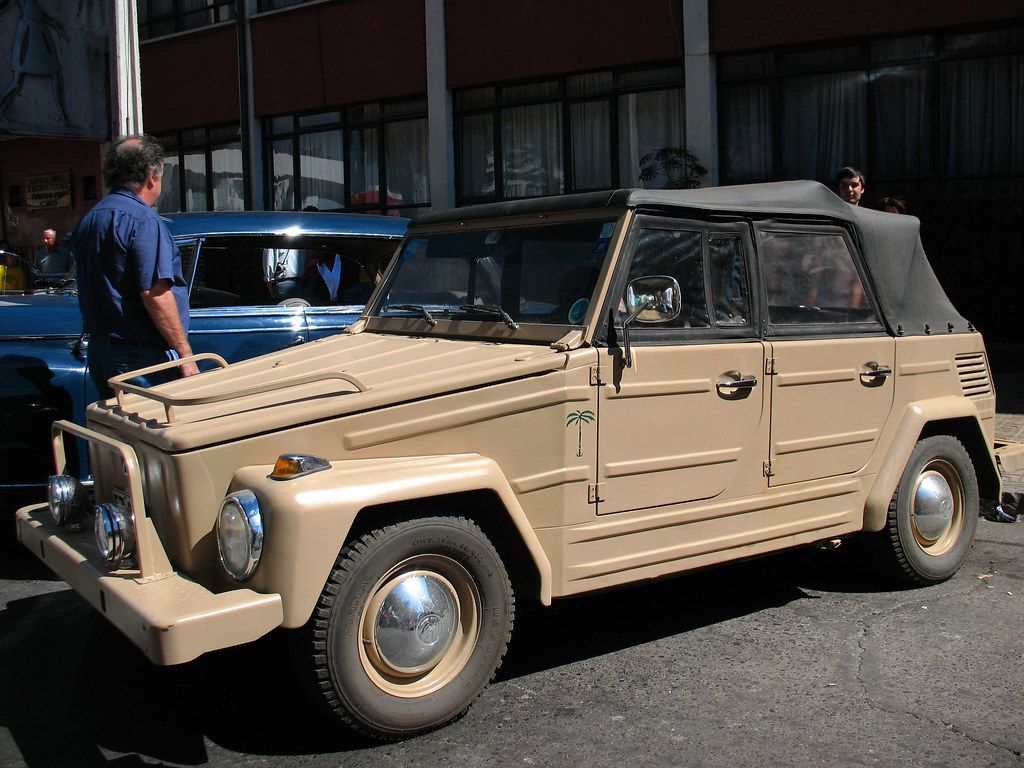
6. **1973 Volkswagen Thing**Ah, the Volkswagen Thing. Here, we have undeniable proof that Germans can, occasionally, possess an absolutely terrible sense of humor – one that manifests in aggressively rectangular, utilitarian forms. This automotive brick looks like the direct result of a child’s first attempt at drawing a car, using nothing but a ruler and an unshakeable belief that straight lines are always the answer. It manages to make a cardboard box seem aerodynamic by comparison, which is saying something.
With its perfectly vertical windshield and pancake-flat body panels, the Thing appears to have been designed by someone who harbored the perplexing belief that “military surplus meets beach buggy” was a winning combination, and then executed that vision with unwavering commitment to simplicity, to the detriment of any aesthetic appeal. Its form follows absolutely no function beyond basic enclosure, lacking any curves or flourishes.
Perhaps the most telling detail about this geometric disaster is its name: Volkswagen literally named it “Thing.” Why? Because even they, the venerable German engineers and marketers, couldn’t quite figure out what this collection of straight lines and flat surfaces was supposed to be. It’s a car that bravely wore its identity crisis on its sleeve, or rather, on its remarkably un-curved body panels. The Thing is more than just an ugly car; it’s a statement, a boxy, unyielding statement.
Car Model Information: 1974 Volkswagen Thing
Caption: Civil version with military shrub removers and custom seats
Name: Volkswagen Type 181/182
Manufacturer: Volkswagen
Aka: Volkswagen Type 181 (LHD) Volkswagen Type 182 (RHD),Sold as:,Volkswagen Thing (United States),Volkswagen Camat (Indonesia),Volkswagen Safari (Mexico),Volkswagen Trekker (UK),Volkswagen Pescaccia (Italy)
Production: cite book
Assembly: Wolfsburg
Predecessor: Volkswagen Kübelwagen
Successor: Volkswagen Iltis
Class: Military vehicle
BodyStyle: Cabriolet (automobile)
Layout: Rear-engine, rear-wheel drive layout
Engine: Flat-four engine
Transmission: Manual transmission
Wheelbase: 2400 mm
Abbr: on
Length: 3780 mm
Width: 1640 mm
Height: 1620 mm
Weight: 910 kg
Categories: All articles needing additional references, All articles that may contain original research, Articles needing additional references from August 2019, Articles that may contain original research from April 2017, Articles with short description
Summary: The Volkswagen Type 181 is a two-wheel drive, four-door convertible, manufactured and marketed by Volkswagen from 1968 until 1983. Originally developed for the West German Army, the Type 181 also entered the civilian market as the Kurierwagen (“courier car”) in West Germany, the Trekker (RHD Type 182) in the United Kingdom, the Thing in the United States and Canada (1973–74), the Safari in Mexico and South America, and Pescaccia in Italy. Civilian sales ended after model year 1980.
Manufactured in Wolfsburg, West Germany (1968–1974), Hannover, West Germany (1974–1975), Emden, West Germany (1975–1978), Puebla, Mexico (1970–1980), and Jakarta, Indonesia (1972–1980), the Type 181 shared its mechanicals with Volkswagen’s Type 1 (Beetle) and the pre-1968 Volkswagen Microbus, its floor pan with the Type 1 Karmann Ghia, and its concept with the company’s Kübelwagen, which had been used by the German military during World War II.
The overall configuration loosely recalls the chic, open beach cars of the 1960s, including the BMC Mini Moke, Fiat Ghia Jolly, Renault Rodeo, Citroën Méhari and Meyers Manx. All four doors were removable and interchangeable, the windshield folded flat, and the convertible roof could be removed for al fresco driving. The spartan interior featured vinyl covered bucket seats, painted sheet metal, drain holes and perforated rubber mats. A fiberglass hardtop and trunk-mounted auxiliary heater were optional.
Get more information about: Volkswagen Type 181
Buying a high-performing used car >>>
Brand: Volkswagen Model: Thing
Price: $24,999 Mileage: 45,382 mi.
Read more about: Gearhead God: A High-Octane Tour Through John Cena’s Legendary American Muscle Car Empire
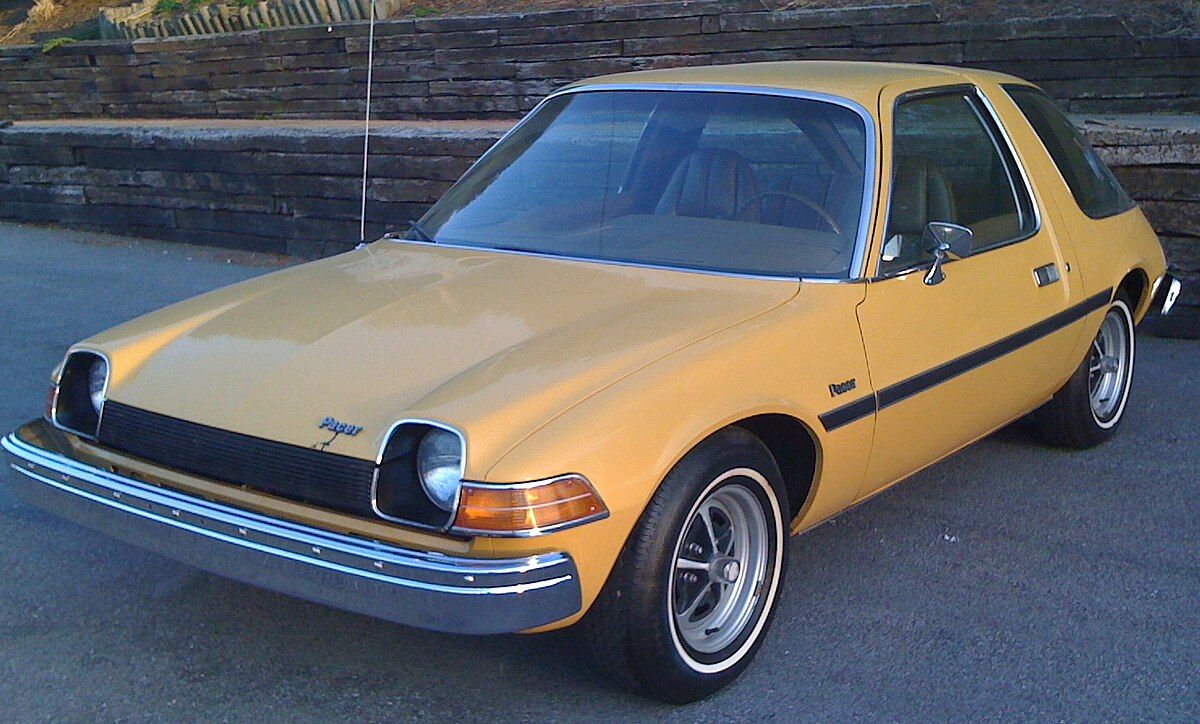
7. **1975 AMC Pacer**Ah, the AMC Pacer, a vehicle that truly embraced the idea of openness and visibility, but perhaps a little *too* much. With its unusually wide glass areas and a rounded, bubble-like shape, it completely broke from the angular norms of its era, looking playful and futuristic – or, as some less charitable souls called it, “the flying greenhouse.” It was the automotive equivalent of a fishbowl among a sea of rectangular boxes, constantly inviting onlookers to peer inside its aquatic proportions.
Though the Pacer’s intention was genuinely fresh – even groundbreaking, with its famously asymmetrical doors (the passenger door was notably longer for easier rear access, a thoughtful but visually perplexing detail) – the reality, unfortunately, fell significantly short when practicality and performance entered the picture. This car was surprisingly heavy for its relatively compact size, tipping the scales at over 3,000 lbs, thanks to all that glass and steel, making it quite the lump to move around.
Consequently, the driving experience often felt uneven, thanks in no small part to its antiquated straight-six engine trying valiantly to haul all that glass and metal down the road. It was an exercise in automotive optimism crashing against the hard wall of physics and engineering. The Pacer was a car that offered a glimpse into a potential future, but one that was still very much stuck in its present.
However, you have to admit, it made people smile (or at least scratch their heads), and it showed AMC’s creative spirit in full, undeniable force. In a world utterly dominated by rectangles, the Pacer defiantly went with curves, boasting an astounding 37% glass-to-body ratio. That alone earns it a permanent, if somewhat awkward, place in automotive memory. It was famously featured in *Wayne’s World*, proving that even the most peculiar automotive oddballs can achieve cult status and become pop culture icons.
Ultimately, the Pacer was bold, it was weird, and it certainly wasn’t boring. But here’s the rub: being weird doesn’t automatically mean people are willing to pay for it – if that were the case, we’d all be shelling out for tickets to the next furry convention. The Pacer was a lesson that sometimes, a truly unique vision needs a bit more refinement, and a lot less glass, to truly connect with the buying public. It dared to be different, and for that, we salute its glorious, if flawed, attempt.
Alright, deep breath everyone. If you thought the first seven entries in our automotive Hall of Shame were rough, prepare yourselves. The industry kept finding new ways to baffle us, proving that a bad idea can be a relentless, poorly-engineered, and occasionally hilarious journey to reality. Get ready to ask: “What were they *actually* thinking?”
Read more about: 15 Vehicles Millennials Are Steering Clear Of: Unpacking the Generational Divide in Automotive Appreciation

8. **1937 Stout Scarab**We’re diving into pre-war automotive eccentricity with the 1937 Stout Scarab, a car resembling a cockroach at an art deco costume party, dressed as a Victorian parlor. This art deco nightmare on wheels attempted streamlining with the grace of a dung beetle in spats. Its bug-eyed headlights and beetle-like shell make the Scarab appear unsure if it wants to scurry or serve high tea.
Credited with pioneering the modern minivan’s basic shape – a truly forward-thinking concept for 1937 – its execution was profoundly unique. Designer William Stout’s vision resulted in a car defying conventional beauty, landing squarely in “peculiar yesterday” rather than “futuristic tomorrow.”
This Scarab stands as a monument to unchecked ambition, uniquely combining practicality with bizarre aesthetics. It reminds us that even with innovation, the journey can take an awkward turn, leaving us to scratch our heads.
Read more about: 13 Automotive Aberrations So Unforgettable, They Should’ve Been Forgotten
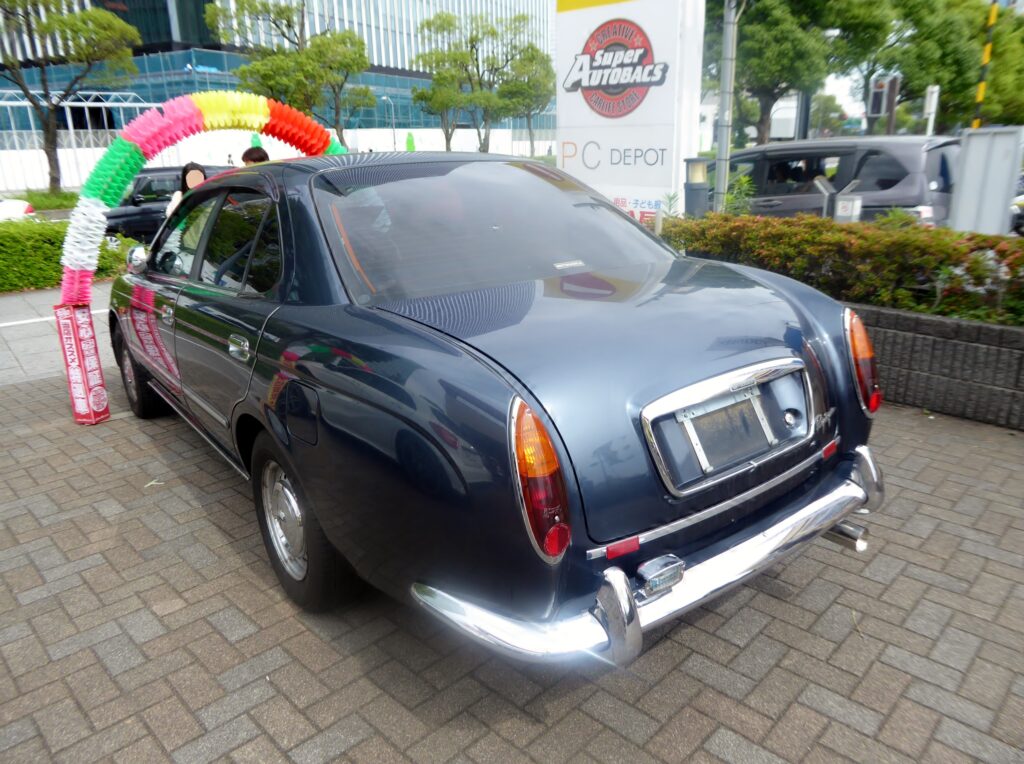
9. **1998 Mitsuoka Ryoga**Prepare for automotive identity crisis: the 1998 Mitsuoka Ryoga. This vehicle looks like a classic Jaguar Mark 2 and a humble Nissan Sunny had an illicit affair in a chop shop. It’s an identity-confused creation, desperately trying to channel British aristocracy on a very limited budget.
That chrome grille yearns for royal heritage, whispering tales of stately homes, while painfully aware its true origins lie with a humble Japanese economy car. The transition from its ambitious, classic-inspired front to the mundane 1990s sedan rear is about as smooth as a teenager’s first, poorly mixed cocktail.
The Ryoga proves that blending two disparate styles often creates an awkward, Frankenstein-like compromise. It tried to elevate its humble donor into something it wasn’t, showing a fancy hat doesn’t always make a king.
Read more about: 13 Automotive Aberrations So Unforgettable, They Should’ve Been Forgotten
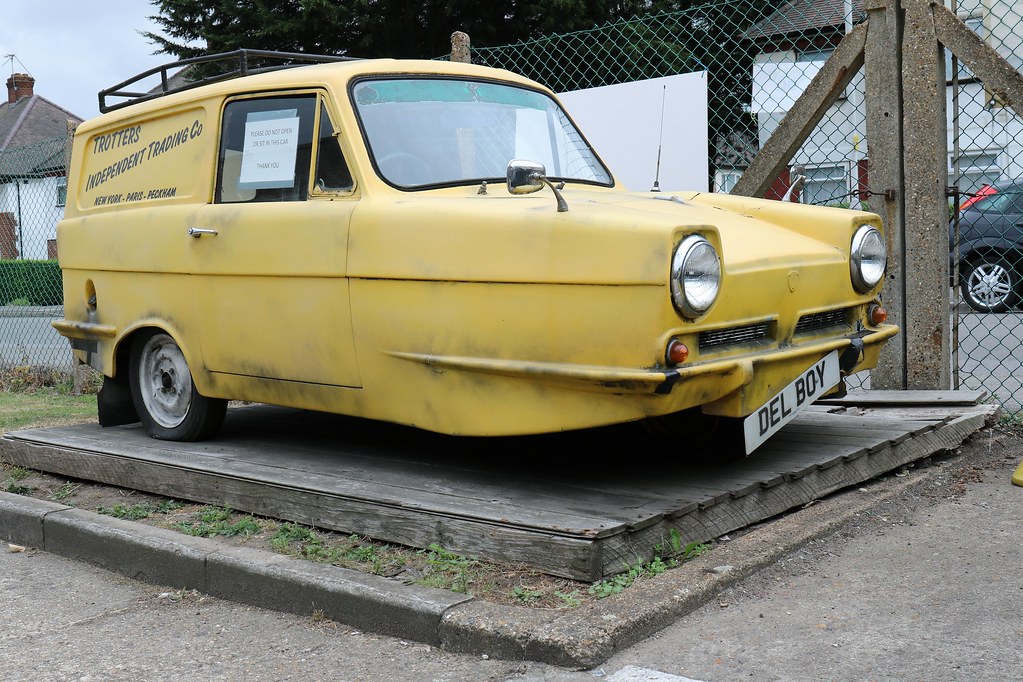
10. **1972 Reliant Regal Supervan**Ah, the Reliant Regal Supervan, or Reliant Robin. This magnificent machine looks like a garden shed grew wheels and decided to identify as a delivery vehicle. This three-wheeled catastrophe appears designed by someone who thought “stability” was a fancy word best left to the horse barn.
With its impossibly narrow front and top-heavy body, the Regal Supervan seems perpetually ready to topple at the mere thought of a corner. It is the automotive equivalent of trying to balance an over-ripe egg on a toothpick while riding a unicycle.
Only the British, in their peculiar wisdom, could create a vehicle that makes driving in a straight line feel like an extreme sport. It’s a testament to audacious minimalism, inspiring involuntary spasms of sympathy from passersby. A true icon of lovable, if terrifying, British engineering.
Car Model Information: 2025 Audi Q7 55 Premium Plus
Name: Reliant Regal
Caption: 1956 Reliant Regal (Mk III)
Manufacturer: Reliant Motors
Production: 1952–1973
Assembly: Tamworth, Staffordshire
Class: City car
Layout: Front-engine, rear-wheel-drive layout
Wheelbase: 1931 mm
Abbr: on
Length: 3429 mm
Width: 1486 mm
Height: 1448 mm
Weight: 445 kg
Predecessor: Reliant Regent
Successor: Reliant Robin
Sp: uk
Categories: All Wikipedia articles written in British English, All articles needing additional references, Articles needing additional references from March 2021, Articles with short description, CS1 maint: location missing publisher
Summary: The Reliant Regal is a small three-wheeled car and van that was manufactured from 1952 to 1973 by the Reliant Motor Company in Tamworth, England, replacing the earlier Reliant Regent three-wheeled cyclecar van which had its origins in a design bought by Reliant from the Raleigh Bicycle Company. As a three-wheeled vehicle having a lightweight (under 7 cwt, 355.6 kg) construction, under UK law it is considered a “tricycle” and can be driven on a full (class A) motorcycle licence. In 1962, with the release of the Reliant Regal 3/25, van and estate versions with a side-hinged rear door were marketed as the Reliant Supervan.
Get more information about: Reliant Regal
Buying a high-performing used car >>>
Brand: Reliant Model: Regal Supervan
Price: $55,675 Mileage: 20,490 mi.
Read more about: 13 Automotive Aberrations So Unforgettable, They Should’ve Been Forgotten

11. **2001 Pontiac Aztek**If there’s one vehicle epitomizing automotive design’s cautionary tale, it’s the 2001 Pontiac Aztek. This notorious catastrophe still looks designed by blindfolded executives throwing parts at a wall. Its grotesque proportions and bizarre plastic cladding make it appear as if two different cars merged after a collision. From its multi-level nose to its protruding rear, it resembled a concept sketch that escaped deletion, making everyone wonder: what *is* this thing?
The Aztek’s interior actually boasted surprising functionality, including an optional camping-ready setup. This showed imagination for customer needs, but the external execution felt clunky. Buyers struggled to understand its visual language, leading to sales far below GM’s ambitious targets (27,000 best year vs. 75,000 desired).
Yet, this vehicular tragedy found an unlikely second life in pop culture, notably *Breaking Bad*, embodying Walter White’s desperate suburban dad persona. The Aztek didn’t just break design rules; it shattered and defiantly reassembled them all wrong. It always started a confused conversation, daring to be different. It’s a permanent fixture in “what-were-they-thinking” history, a monument to ambition needing a reality check.
Car Model Information: 2003 Pontiac Aztek FWD
Name: Pontiac Aztek
Manufacturer: General Motors
Production: July 2000 – December 2004
Assembly: Ramos Arizpe
Designer: Tom Peters (chief designer: 1997)
Class: Mid-size crossover SUV
BodyStyle: SUV
Platform: GM U platform
Related: Buick Rendezvous
Layout: Front-engine, front-wheel-drive layout
Engine: General Motors 60° V6 engine#LA1,V6
Transmission: GM 4T65-E transmission,Automatic transmission
Wheelbase: 108.3 in (2,751 mm)
Length: 182.1 in (4,625 mm)
Width: 73.7 in (1,872 mm)
Height: 66.7 in (1,694 mm)
Weight: 3,779–4,043 lb (1,714–1,834 kg)
Predecessor: Pontiac Sunrunner
Successor: Pontiac Torrent
ModelYears: 2001–2005
Categories: All-wheel-drive vehicles, All articles needing additional references, All articles with unsourced statements, Articles needing additional references from October 2013, Articles with short description
Summary: The Pontiac Aztek is a mid-size crossover SUV marketed by General Motors introduced in 2000 for the model years 2001 through 2005. As a four-door crossover with front-wheel drive and optional all-wheel drive, the Aztek featured a four-speed automatic transmission with a V6 engine. Marketed by Pontiac as a “sport recreational vehicle,” the Aztek used a shortened platform shared with GM’s minivans (e.g., the Pontiac Montana) featuring 94 cubic feet of cargo room with its rear seats removed. The design employed conventional rear outswing doors rather than sliding doors, and a split rear tailgate, the lower section formed with seat indentations and cupholders. Other features included a front center console that doubled as a removable cooler, optional rear stereo controls in the cargo area, optional sliding cargo floor with grocery compartments, and optional camping package with an attachable tent and air mattress.
Get more information about: Pontiac Aztek
Buying a high-performing used car >>>
Brand: Pontiac Model: Aztek
Price: $4,200 Mileage: 91,955 mi.
Read more about: Buyer Beware: 15 Sedans That Won’t Make it to 80,000 Miles Without Costly Repairs

12. **1961 Citroën Ami**Ah, Citroën – often celebrated for avant-garde designs. Then there’s the 1961 Citroën Ami, a car that looks like it was designed by someone who only saw cars through a funhouse mirror. Its reverse-slanted rear window and bizarrely canted headlights give it the perpetual expression of a confused pug trying to read fine print.
The French, perhaps optimistically, christened it the “Ami,” meaning “friend.” But with those dead-eyed headlamps and awkward, hunched stance, it’s more like the uninvited friend who critiques your decor. The overall effect: less bold design, more “someone accidentally sat on the clay model and nobody dared to fix it.”
Its design quirks were meant to be practical, but they combine to form a profoundly unsettling whole. Even for Citroën, the Ami stands out, suggesting a misunderstanding of aesthetic cohesion. It inspires quiet bewilderment, making you ponder the thought process behind such a unique, odd machine.
Read more about: Timeless Machines, Modern Rules: Unpacking the Legality of Classic Cars Lacking Modern Safety Features

13. **1957 Aurora Safety Car**Now, feast your eyes on what might be the single most optimistically hideous attempt at safety design: the 1957 Aurora Safety Car. This metallic monstrosity truly looks like a manatee that swallowed a greenhouse whole. Its front end could only be described as a face not even its designer, a Catholic priest, could truly love.
With its bulbous nose, a gaping maw-like grille, and bizarre raised “eyebrows” over the headlights, the Aurora appears perpetually shocked by its own reflection. Created by Father Alfred Juliano, who claimed divine inspiration for his radical safety features, it proves divine intervention needs a mandatory design consultant.
Despite noble intentions to prioritize safety, its visual reality was overwhelmingly off-putting, sealing its fate. This chrome-laden reminder shows that good intentions, coupled with questionable aesthetics and an exorbitant price tag, lead to spectacular failure. The Aurora is a tragic, beautiful mess, a testament to a visually nightmarish dream.
Car Model Information: 2025 Audi Q7 55 Premium Plus
Categories: All articles needing additional references, All articles with unsourced statements, Articles needing additional references from April 2016, Articles with short description, Articles with unsourced statements from April 2016
Summary: Automotive safety is the study and practice of automotive design, construction, equipment and regulation to minimize the occurrence and consequences of traffic collisions involving motor vehicles. Road traffic safety more broadly includes roadway design.
One of the first formal academic studies into improving motor vehicle safety was by Cornell Aeronautical Laboratory of Buffalo, New York. The main conclusion of their extensive report is the crucial importance of seat belts and padded dashboards. However, the primary vector of traffic-related deaths and injuries is the disproportionate mass and velocity of an automobile compared to that of the predominant victim, the pedestrian.
According to the World Health Organization (WHO), 80% of cars sold in the world are not compliant with main safety standards. Only 40 countries have adopted the full set of the seven most important regulations for car safety.
In the United States, a pedestrian is injured by a motor vehicle every 8 minutes, and are 1.5 times more likely than a vehicle’s occupants to be killed in a motor vehicle crash per outing.
Improvements in roadway and motor vehicle designs have steadily reduced injury and death rates in all first world countries. Nevertheless, auto collisions are the leading cause of injury-related deaths, an estimated total of 1.2 million in 2004, or 25% of the total from all causes. Of those killed by autos, nearly two-thirds are pedestrians. Risk compensation theory has been used in arguments against safety devices, regulations and modifications of vehicles despite the efficacy of saving lives.
Coalitions to promote road and automotive safety, such as Together for Safer Roads (TSR), brings together global private sector companies, across industries, to collaborate on improving road safety. TSR brings together members’ knowledge, data, technology, and global networks to focus on five road safety areas that will make an impact globally and within local communities.
The rising trend of autonomous things is largely driven by the move towards the autonomous car, that both addresses the main existing safety issues and creates new issues. The autonomous car is expected to be safer than existing vehicles, by eliminating the single most dangerous element – the driver. The Center for Internet and Society at Stanford Law School claims that “Some ninety percent of motor vehicle crashes are caused at least in part by human error”. But while safety standards like the ISO 26262 specify the required safety, it is still a burden on the industry to demonstrate acceptable safety.
Get more information about: Automotive safety
Buying a high-performing used car >>>
Brand: Aurora Model: Safety Car
Price: $55,675 Mileage: 20,490 mi.
Read more about: Timeless Engineering, Iconic Style: Unpacking the Most Significant Cars of the 1940s

14. **1998 Daihatsu Move**Finally, we arrive at the 1998 Daihatsu Move, a vehicle that appears to be the direct result of photocopying a regular car at 75% scale but squishing it vertically. With its absurdly tiny wheels supporting a towering, boxy body, it looks less like an automobile and more like a loaf of bread attempting to stand on four button mushrooms.
The front end of the Daihatsu Move sports an expression of permanent bewilderment, as if it’s as confused about its existence as we are. Its proportions are so cartoonishly wrong, so divorced from automotive grace, it seems it should star in a children’s anime rather than occupy real roads.
The Move highlights where ultra-compact, space-efficient design clashes with aesthetic norms. While practical for tight urban spaces, its visual presentation suggests a profound lack of self-awareness. It’s a small car with a massive, peculiar personality.
History remembers victories, but it must also learn from its missteps. These fourteen vehicles, from the bizarre Fiat Multipla to the bewildered Daihatsu Move, may not have topped sales charts, yet they left behind stories brimming with ambition, odd choices, and questionable decisions. It’s like that friend at the bar who makes terrible choices, but on wheels.
What makes a car truly “awful”? Is it the design, the drive, or the profound disappointment it brings? Often, it’s all of those things wrapped in a shell that still sparks curiosity. Perhaps you once drove one, or just wondered what the designers were smoking.
Read more about: 13 Automotive Aberrations So Unforgettable, They Should’ve Been Forgotten
Each of these machines tried to change something, even if the results fell flat. That courage to experiment, however misguided, still matters. So, should we mock them or thank them for showing us what *not* to repeat? Both, I say, with a heavy dose of mockery. But in the end, even failure can earn a distinguished, if embarrassing, place in automotive greatness. At least they dared to be different – something rare today.

